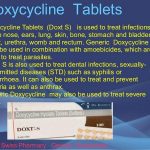
Vancomycin hydrochloride is administered by slow IV infusion for the treatment of systemic infections. Vancomycin hydrochloride is given orally as capsules or an oral solution for the treatment of enterocolitis caused by Staphylococcus aureus (including methicillin-resistant strains) or for antibiotic-associated pseudomembranous colitis caused by Clostridium difficile; if necessary, the parenteral form of vancomycin HCL also may be administered orally for the treatment of these infections.









